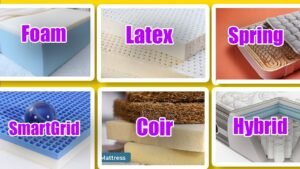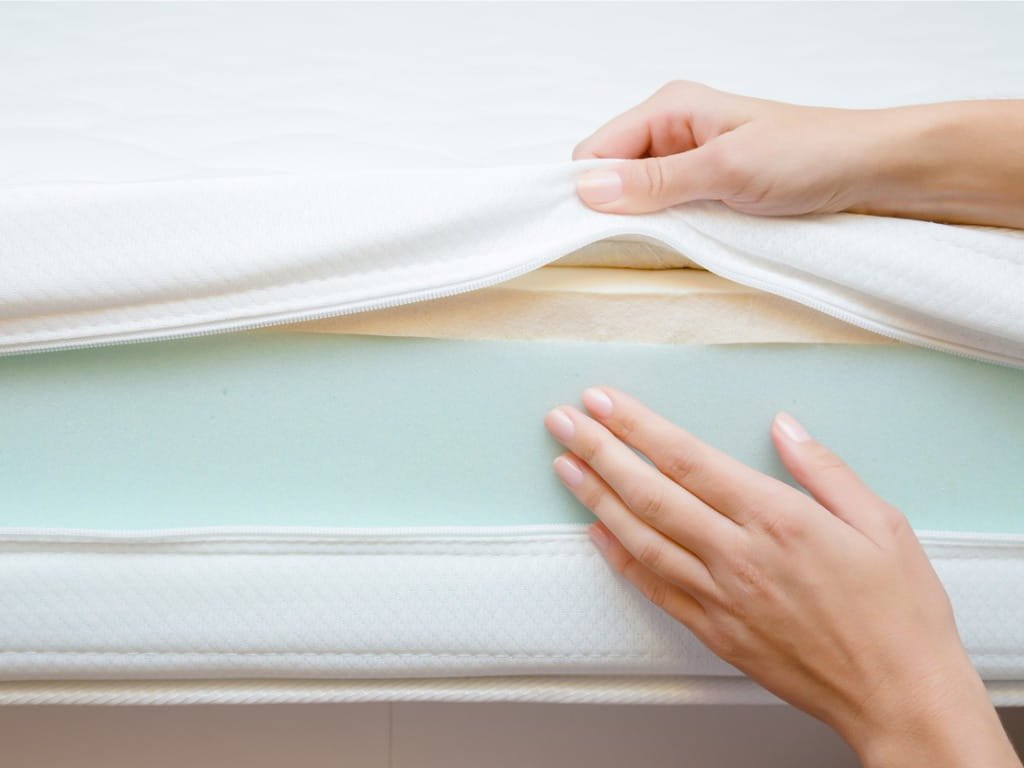In the world of mattresses, foam is the quiet champion. While shoppers chase high-tech springs and flashy features, it’s foam—soft, silent, and supportive—that does the real work. Foam offers everything from plush memory layers to firm and breathable bases, promising comfort, pressure relief, and perfect alignment, which is universal for sleeping. So, what makes this humble material the backbone of better sleep? Let’s find out.
Why Foam Is So Widely Used
Foam is cost-effective and found in nearly every type of mattress, even hybrid and spring-based ones. For manufacturers, foam offers flexibility in design and scalability in production. For sleepers, it brings comfort without complication. The foam contours to your body shape and provides deep support which makes it a good choice for most people’s body types and their sleeping habits.
Key Benefits of Foam in Mattresses
- Pressure Relief
Foam distributes body weight evenly, reducing pressure on joints, especially at the hips, shoulders, and lower back. Side sleepers and those with chronic pain will greatly benefit from soreness and stiffness relief. - Motion Isolation
If you share a bed, foam solves the issue where one person’s movements do not disturb the other. Unlike spring mattresses that transfer motion, foam cushions contain it, proving useful for light sleepers or couples that have different sleeping hours. - Support and Alignment
Not all foam is soft; some can be explicitly well-structured. The top layers of high-density foam act like a solid base, enhancing spinal alignment and providing support. For individuals suffering from back troubles or requiring additional lumbar support, a combination of softness and firmness is ensured through the foam. - Hypoallergenic and Hygienic
Foam is resistant to dust mites and mold, especially when treated or manufactured with antimicrobial additives. Foam serves as a good option for allergy patients who require a cleaner sleep surface. - Quiet Performance
Unlike springs that bounce or creak, foam stays silent. People who have the tendency to get woken up easily will appreciate the quietness when changing positions.

Types of Foam Used in Mattresses
Memory Foam (Viscoelastic Foam)
Known for its slow response and “hugging” feel, memory foam softens under heat and pressure. This makes it ideal for pressure relief and personalized support. With older memory foams, there was the problem of over-retention of heat inside them, but now newer memory foams include gels which help absorb some of that heat.
Polyurethane Foam (Polyfoam)
Polyfoam works great as an affordable replacement for memory foam and has even greater usage. Polyfoam comes in various densities and qualities. Low-density polyfoam is softer and used in comfort layers, while high-density polyfoam adds durability and support at the base of the mattress.
High-resilience (HR) Foam
HR foam is a premium version of polyfoam that offers excellent bounce, support, and durability. It’s often found in higher-end mattresses as a core layer or transition zone due to its ability to resist sagging over time.
Gel-Infused Foam
This type of foam includes gel beads to help draw heat away from the body. It’s especially beneficial in warmer climates or for hot sleepers who want the contouring of memory foam without overheating.
Latex Foam
While latex foam may not be synthetic foam, it is still important to note. Latex foam can be natural, synthetic, or blended. Compared to memory foam, latex is more breathable, eco-friendly, responsive, and firmer and buoyant
How a Foam Mattress Is Made
A foam mattress starts with the creation of foam, where liquid ingredients react to form tiny gas bubbles, expanding into a soft, sponge-like material. Depending on the formula and production process, the foam can be made firm, soft, breathable, or supportive. Once the foam is ready, it’s cut into layers, typically including comfort, transition, and support layers. These are then assembled, shaped, and encased in fabric covers to create the final mattress. Every step is carefully managed to ensure durability, comfort, and long-lasting support.
Common Misconceptions About Foam Mattresses
- “Foam Sleeps Hot”
This was an issue in the past, but things have changed. Modern foams containing gel, copper, graphite, and open-celled structures improve both airflow and temperature control. - “Foam Is Too Soft or Sinks Over Time”
While low-quality foam may sag over time, high-quality mattresses with dense and well-constructed foams are built to last. Many modern mattresses use layered foam systems that sustain their shape and comfort without the common sinking feeling. - “Foam Has a Chemical Smell”
New foam mattresses can indeed have a slight odor at first, a result of the manufacturing process. However, most foams today are made with safer, cleaner materials, and the scent typically fades within a few days of airing out.
Foam in Mattresses — The True Foundation of Comfort
When it comes to mattresses, foam is more than just filler; it’s a crucial element of relaxation and support. Foam can be a plush top layer, a responsive transition section, or an orthopedic base. Its softness, coupled with responsive adaptability, supports almost every sleeping style. This balance of softness and structure is central to the design of modern mattresses.
Final Thoughts
While foam doesn’t get as much credit as luxury springs or fancy materials, it has remained popular because of how well it works. It provides support, helps relieve pressure as you move, and gently buffers you during your daily routines. To put it simply, it’s the mattress material no one talks about but everyone sleeps on.


